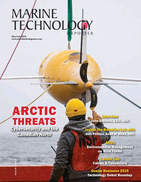
Schmidt Sciences Fosters AI Research
professor at the University of Toronto● Bijun Tang, presidential postdoctoral fellow at Nanyang Technological University● Ellen Vitercik, assistant professor at Stanford University● Eric Wong, assistant professor at the University of Pennsylvania● Chaowei Xiao, assistant professor at the University of Wisconsin-Madison
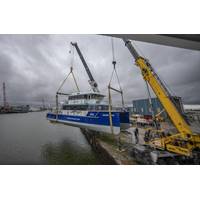
New Vessel Launched for Lake Superior Research Institute
Harvey, La. shipbuilder Midship Marine has launched a new low-emission battery hybrid research vessel for the Lake Superior Research Institute (LSRI) at the University of Wisconsin-Superior.Described as a "floating classroom", the 65-foot aluminum catamaran Sadie Ann has been will support the university’s on-water education and research in the the icy waters of Lake SuperiorThe Incat-Crowther-designed vessel is 24-feet wide with a maximum capacity of 49 passengers and eight crew. A reinforced hull will allow operation in light winter conditions and the 4.6-foot draft will be operable

New Hydrothermal Vent Found Near Galápagos
, Charles Darwin Foundation, and the Ecuadorian Navy’s Oceanographic and Antarctic Institute (INOCAR). Other participating institutions included University of Rhode Island, Lehigh University, the Lamont-Doherty Earth Observatory, United States Geological Survey, Harvard University, and the University of Wisconsin, Madison.“Scientists have known since the early 2000s that this vent field was likely there. But it was particularly hard to locate because the fluids are clear and do not emit large clouds into the water like black smokers do,” said Beinart. “It took our team of chemists
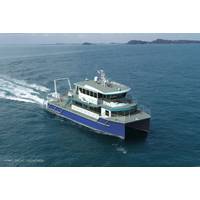
Incat Crowther Designs University of Wisconsin-Superior's New Research Vessel
The Lake Superior Research Institute (LSRI) at the University of Wisconsin-Superior has commissioned naval architecture firm Incat Crowther to design a new low-emission battery hybrid research vessel.The aluminum-hulled vessel will be built by Louisiana shipbuilder Midship Marine for expected delivery in spring 2024.Described as a ‘floating classroom’, the 65-foot USCG-certified catamaran will support the university’s on-water education and research and features proven parallel hybrid battery propulsion technology to reduce greenhouse gas emissions and help meet the university’s
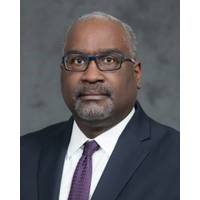
Morgan Confirmed as Deputy NOAA Administrator
process of converting observations to predictions for environmental threats.Morgan brings more than 25 years of demonstrated scientific leadership to this position. He most recently served as a professor and associate department chair in the Department of Atmospheric and Oceanic Sciences at the University of Wisconsin-Madison, where his research was focused on the analysis, diagnosis, prediction, and predictability of mid-latitude and tropical weather systems
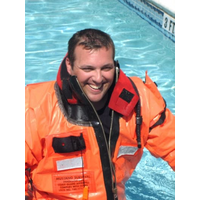
Consortium for Ocean Leadership Names Leonardi as President and CEO
, having held research and adjunct faculty appointments at Miami Dade College, Broward College and James Madison University.Dr. Leonardi received his master’s and doctorate degrees in physical oceanography from Florida State University and his undergraduate degree in meteorology from the University of Wisconsin-Madison.“I am honored to be selected as the next president and CEO of the Consortium for Ocean Leadership,” said Dr. Leonardi. “I have long been both a partner and a fan of COL, so the opportunity to lead this organization, especially at a time of renewed interest in the
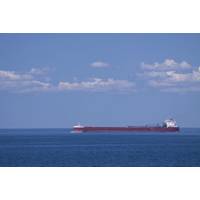
Study: Nonnative Species Carried in Lakers' Ballast Water
surveillance to date. Determination of whether the collected nonindigenous species of zooplankton might be able to survive or establish in western Lake Superior waters was beyond the scope of the study.The research, conducted by The Great Waters Research Collaborative (GWRC), a project of the University of Wisconsin-Superior’s Lake Superior Research Institute (LSRI), builds on work conducted by others in the Great Lakes in recent years.The ships’ operators proposed the study as a means of complying with Minnesota Pollution Control Agency ballast water permitting requirements, and approached

Revving Up a New ROV
in the classroom next year. And, the students from different states began their connectivity as part of this trip. They were interspersed between two boats to facilitate the budding water-quality collaborative relationships.Jake Walsh, a freshwater ecologist working as a researcher with the University of Wisconsin-Madison Center for Limnology, captained one boat. UW-Madison is the birthplace of the study of freshwater lakes, known as limnology, so it was fitting to have his expertise. Walsh's work has focused on understanding how species invasions, eutrophication, climate change and human decision-maki
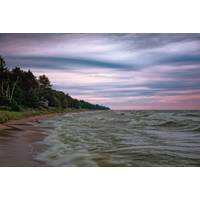
How Could a ‘Sand Motor’ Help the Great Lakes?
by the waves. This tactic can protect an area for roughly 15 to 25 years. Now, the Wisconsin Sea Grant Institute is exploring whether this approach could have benefits in the Badger State. Undergraduate research scholar Briana Shea is part of the team exploring this topic. The University of Wisconsin-Madison's Undergraduate Research Scholars program gives first- and second-year students a taste of cutting-edge research in a variety of fields. At Sea Grant, Shea is mentored by assistant director for extension David Hart. Hart’s areas of expertise include coastal hazards and community
 February 2025
February 2025


